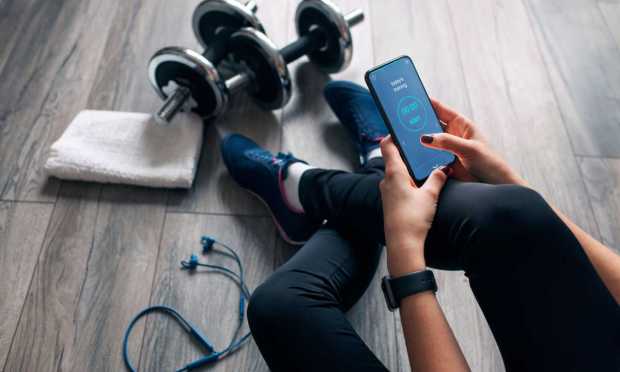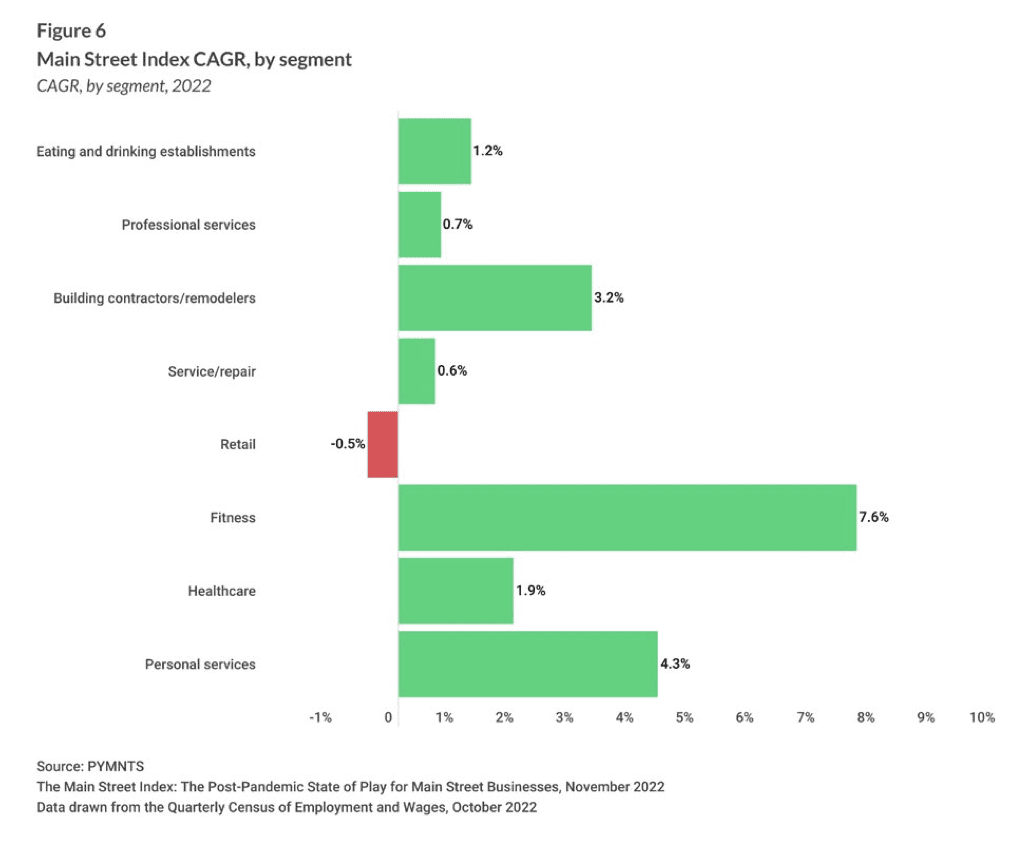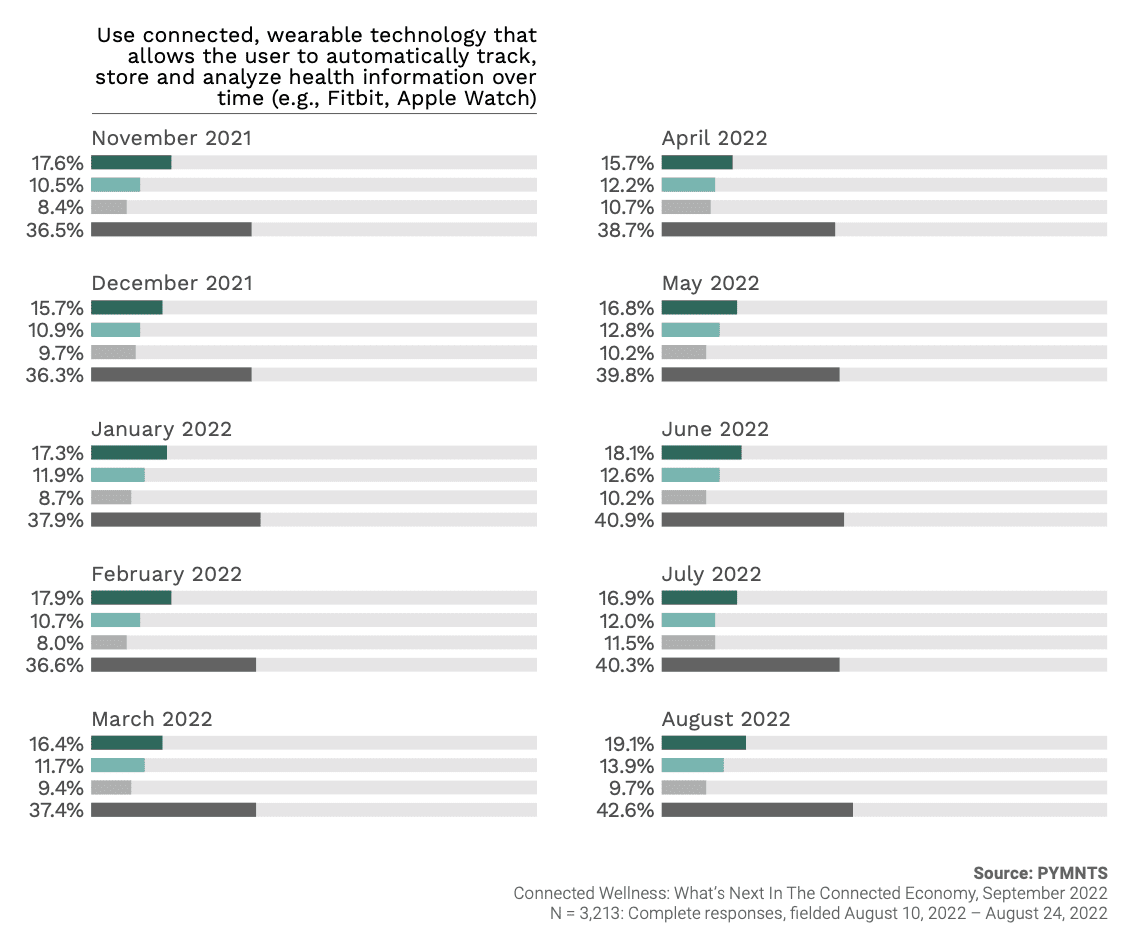Connected Consumers Keep Main Street Fitness Firms’ Growth Healthy

Depending on where you look, Main Street small and medium-sized businesses (SMBs) are either struggling with macro headwinds and fighting for survival — or they’re navigating the challenging environment with aplomb.
And in the case of fitness-related firms in particular, they are increasingly finding themselves in the latter category, more so than many other sectors.
As noted our most recent survey, “Main Street Index Q3 2022: The Post-Pandemic State of Play for Main Street Businesses,” local businesses are all facing inflation, rising labor costs, and the specter of a consumer pullback.
Over the last few years, the recovery from pandemic lows has been significant. SMBs’ index scores have climbed nearly 18% from their Q2 2020 low, but quarter-over-quarter growth has slowed to just 0.7%, which indicates slowing momentum. The data show that 37% of SMBs say inflation is their current and greatest challenge.
A total of 6.8% of the firms surveyed said it is “somewhat less than likely” to remain open beyond the next two years. That’s up from 5.5% at the beginning of the year.
Some Bright Spots in Health and Fitness
Drill down a bit, and the fitness sector stands out for its CAGR growth rate for 2022, with 7.6% growth, and we note too that healthcare firms have shown a 1.9% CAGR through the same period.

Connecting the dots — and evidence from the connected economy — shows those two verticals’ positive momentum is tech driven, and inextricably linked.
As we’ve found in separate research, in the study “Connected Wellness: What’s Next in the Connected Economy,” a PYMNTS report with research sponsored by CareCredit, there’s a growing embrace of technology, and specifically wearable devices, to track vital signs and health signals and share them with apps and platforms that help manage health. Those digital tools are the ones that are tied to “preventative health” activity. Exercise is a key point of preventative care, meant to ward off chronic medical conditions and any number of challenges that come with getting older. Our studies found that 43% of consumers use wearable health technology. The chart below details the increasing frequency of use of these devices over time to track and analyze health and health-related activities over the last several months.

The increasing use of these apps and devices would, conceivably, spur greater engagement with healthcare practitioners in an age where wellness is top of mind, and where the pandemic continues to linger and many consumers may be “catching up” on doctor visits that had been put off during COVID’s dark days. There’s another positive trend in place, too, that is bringing us back into the waiting rooms — flexible financing, which makes healthcare more affordable.
With input from healthcare professionals, and with the technology in hand (or on wrists) to track shared goals, these same consumers would make a beeline to the gym, to the bike, the weights and the classes. The fitness firms of Main Street are proving to be resilient in a world where tracking every rep and step — and progress toward wellness goals (not just looking good) — is part of consumers’ digital, daily lives.
